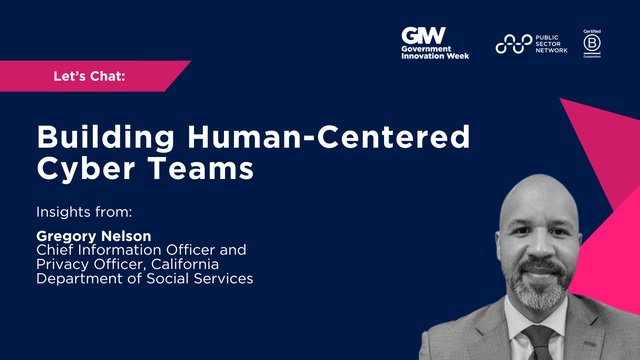5 key take-outs of the session

Diane Hickman,
Director of Craft Development and Frameworks, APS Academy,
Australian Public Service Commission

Matti Clements,
Director, People Development & Wellbeing,
Australian Institute of Sport

Shannon Pigram,
Head of Culture & Capability,
ESTA (VIC)

Martine St-Louis,
Director, Centre of Enterprise, Learning and Professional Development,
Justice Canada
There is a commonly held belief, especially in business circles, that if you are not moving forwards then it is as if you are moving backward. In other words, innovation, creativity, and continuous improvements are necessary in order to succeed. As much as this might apply to business, it certainly applies to learning and development (L&D) too. In fact, L&D is sometimes the most necessary trait when it comes to moving forwards because both learning and development are underpinned by the latest trends and the most up-to-date information. Much of this came through in PSN’s 'Future of Learning and Development' seminar, and the following are five of the key take-outs from that event, though of course many of them are interconnected and related to each other:
Learning is a continuous process
If the goal of a business is to constantly move and improve, then the goal of L&D should also be a continuous process. Diane Hickman , the Director of Craft Development and Frameworks at the APS Academy of the Australian Public Service Commission (APSC), says that their academy was specifically set up to “foster a culture of continuous learning and high performance.” In fact, “the first-ever Australian Public Service Learning and Development Strategy, which was released in July 2021, focuses on a broad range of learning methods our people can use to build their capability continuously.”
Shannon Pigram , the Head of Culture & Capability at ESTA in Victoria, agrees. ESTA exists to “look after the triple zero services to the Victorian community, for police, fire, ambulance, and SES, on what is normally the worst day of somebody’s life. We then take information from the person calling and dispatch the required emergency response.” Dealing with life and death decisions is the core of their operation, so they have “little capacity to release people from their jobs to dedicate time to development.” Therefore, when thinking about any kind of L&D, “what is really important for us is that it is embedded into the flow of our ongoing work.” Diane Hickman also says L&D needs to be embedded.

“As working life becomes longer and the world continues to change in rapid and complex ways, the need to learn new skills and the ability to adapt will increase.”
As such, the only way to embed L&D is through continuous and ongoing learning. At the APSC they are “adopting a continuous learning model to enable our workforce to build the critical capabilities needed to do their best work today, and the ability to learn and adapt at the speed of change.” At ESTA, Shannon Pigram says that they too are adopting an ongoing learning approach. It is about “ensuring that there are constant conversations about it and that little challenges that occur with a number of little initiatives. We then look at leveraging those against our existing workflow and embedding the changes as we go.” There were numerous ways that they have been able to embed continuous L&D, but it included better onboarding practices, training for senior leaders, and the use of “LinkedIn learning, which we use to curate content, monitor access, and drive engagement.”
Wellbeing as a part of L&D
Over the years there have been multiple studies by multinational organisations about what makes a good team and how to improve capacity. Matti Clements , the Director of People Development & Wellbeing at the Australian Institute of Sport (AIS), says that when Google conducted a study some time ago, they found, surprisingly, that the “majority of teams who have sustainable high performance have five components including psychological safety, dependability, operational needs, meaning – so that individuals of the team are really personally aligned with the importance of what they’re doing – and impact.” For Google and for others, these results were unexpected because none of the five components related to the actual functions of the team, except how they related to the individual. This got the AIS thinking that “one thing that Australian sport and high-performance teams around the world haven’t done well is psychological safety. And when we talk about psychological safety, what we mean is individuals of that team feeling safe to take risks and be vulnerable in front of one another.”
It is not uncommon for former athletes or others in high pressured environments to write a book after their retirement showing their vulnerable side. But it is extremely uncommon to see that vulnerability whilst they are still active performers. One way of “achieving psychological safety is by having wellbeing within the culture.” In fact, even “Ian Thorpe, one of our greatest Australian Olympians, said that if wellbeing had of been built into the high performing culture when he was competing, he would have gone around for another Olympic Games and could have won more gold medals.”
At the AIS, to try to embed wellbeing into their culture, “three years ago we set up a Department called Athlete Wellbeing and Engagement.” After some time, “we were able to define wellbeing across a number of different parameters, including mental health, career and education, professional development, community engagement and conduct, and professionalism, which includes things like behavioural standards, integrity, and values. We removed the physical element because we are in the business of elite sport, so that is already part of our culture.” The new department developed a “roadmap of priorities” for L&D in general and for wellbeing in particular, and “for the first time in Australian sports history, if you are part of an Australian government-funded sport, you must partake in the wellbeing health check that has been implemented as of this year, and you must take proactive steps towards implementing the roadmap.”

“We believe wellbeing actually provides the platform for sustainable high-performance success”
Shannon Pigram says that at ESTA they are also focused on wellbeing and recently partnered with the Melbourne Business School to “co-design four programs that focus on the future of the organisation, with the objectives of creating a psychologically safe workplace, driving innovation, developing high performing teams, and leading change and transformation.”
Changes to L&D because of pandemic
As in many industries, the pandemic has caused changes to the practice and implementation of L&D. Diane Hickman says from the perspective of the APSC, it seems that the pandemic has “brought forward the future of work by five years. While changes were already occurring in L&D, the pandemic has certainly accelerated those changes, in particular in terms of the increased use of digital technology.” In fact, digital transformation in general and the adoption of new technologies “is going to have a big impact on L&D, which a focus on things other than face-to-face training.” Shannon Pigram says that at ESTA they use the analogy of ordering a pizza to show how much things have changed. “These days we order our pizzas on our phones, pay for our pizza using internet banking or a digital credit card, watch the pizza get delivered and the only physical interaction is when we grab it from our front door.” This is undoubtedly convenient and maybe a much simpler way of ordering, but “it’s created a really challenging environment for government organisations.”

“We need to ensure that we’ve got the capability and learning strategies necessary to enable our organisations to take our services to the next level. One of our greatest challenges is the need to balance the delivery of our essential service, with the need to evolve that service, especially given the current crisis that we’re facing with COVID-19.”
However, it is not all bad news. Martine St-Louis , the Director of the Centre of Enterprise, Learning and Professional Development at Justice Canada, says that because of the pandemic, we are now “positioned to adapt quickly to remain current.” Since working remotely was mandated, “we were able to provide solutions right away. To continue our training, there was a need to develop online courses, so we created e-learning programs and were able to design and respond to a priority in a timely manner.” In just a short while, “we transformed learning from the classroom to a virtual setting and were definitely able to help our internal clients, and our legal and corporate teams to adapt and continue to deliver their courses.”
A new way of learning
The acceleration of digital technologies, along with the need to embed wellbeing and other elements into a continuous learning approach, means that formal classroom learning is no longer the accepted practice. Diane Hickman says that “capabilities such as co-design and community engagement are really important now,” so much so that “formal learning is no longer enough to provide the level of responsiveness and adaptation needed to meet the challenges of constant change.” One of the reasons why the APSC released its Learning and Development Strategy was because it “brings an extended focus beyond formal training and development to learning.”
Matti Clements says that when the AIS decided to include wellbeing into their culture, they realised that “it could not just be for the athletes. We needed to have the whole system, including the leaders of our organisation and our sports, role model wellbeing in their day-to-day practice.” As such, though their Department of Athlete Wellbeing and Engagement was created three years ago, it has now evolved. “The evolution of the department has meant that we now also focus on mental health, professional development and engagement, and community engagement for the benefit of all.”
At ESTA, Shannon Pigram also says that they wanted to integrate some of the more intangible elements, “but the trick was how to close the gap in order to continue to deliver operational excellence, whilst also evolving the organisation. It wasn’t just about delivering training. We had to do it in a new way.”
For Martine St-Louis, the matter was even more prescient because their department conducted an evaluation in 2018, where they discovered that “learning activities were kind of decentralised.” This meant that they desperately needed a new approach. Some of the recommendations from the evaluation included “establishing a learning steering committee and conducting a learning needs analysis (LNA).” The LNA in particular was about “really looking at the skills, knowledge, and behaviours required to meet our future and current business needs.” To discover what those needs were, they conducted interviews across the board and developed a corporate learning plan. “Initially it was a 50-page document but we drilled it down to 16 or 18 themes.” All of these went beyond the formal learning capabilities and were “government-wide priorities, not just justice and legal priorities.” The most important thing it achieved was that it laid the “foundations of our key themes for our organisation to thrive and succeed, and all of them are ongoing commitments.”
Reimagining the workforce of the future
The way to really ensure that the commitments are ongoing and that there is a new way of learning is to reimagine the workforce of the future. Shannon Pigram says that that is exactly what they did at ESTA. To start with, they re-developed their vision and strategy, which brought “clarity towards the building of our roadmap. It also became the benchmark to measure our success.” Then they “built some assumptions” and showed them to their stakeholders and to focus groups, internally and externally, to assess and critique. This gave them a “robust, fit-for-purpose framework which became our Enterprise Capability Framework.” But the most important part was that they created excitement about the future for their workforce by bringing together a series of “multidisciplinary groups and giving them real business challenges. We asked them to come up with some solutions or some visions for what they think excellence could look like in the modern age with some of our services.” These teams developed scenarios of what the triple zero services could look like in the future, which included the use of drones, AI, new technology, and other advances, most of which sped up service and allowed people who speak foreign languages to use the system as seamlessly as those who are native English speakers. Though some of these solutions are unlikely to be implemented just yet, “a great side benefit is that we have now created champions and some really great comms material that we can use to accelerate the work that we’re doing and drive change further in the organisation.”
Martine St-Louis says that the LNA they conducted and the corporate learning plan they created “positioned us to plan for the future for our organisation, and for us to be fully aware of our organisational needs.” They are now set for an exciting future in L&D.

“We have remained essential and relevant to supporting our organisation because we have a plan in place, and we know what the priorities for the future are because of our evaluation exercises.”



































